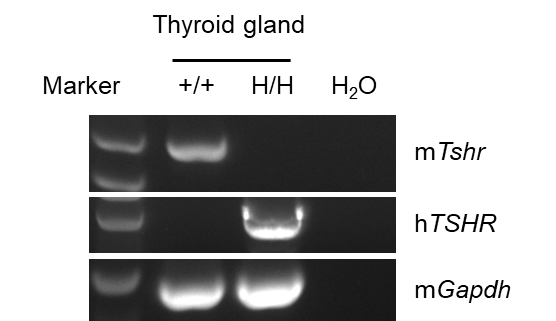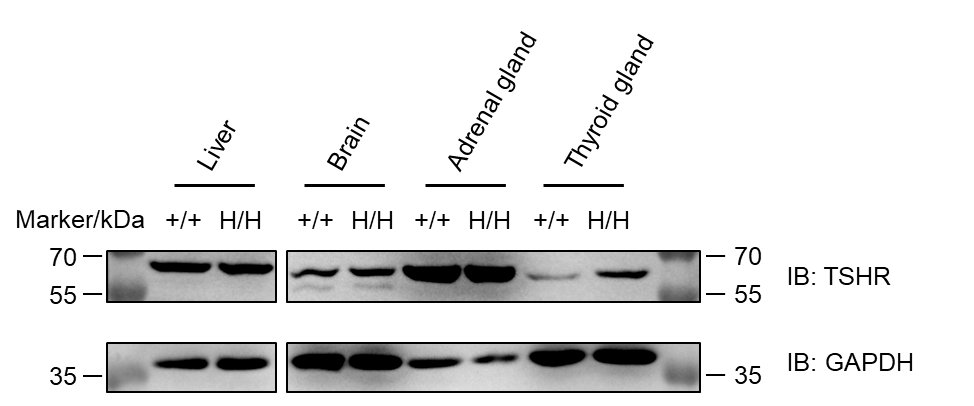Description
Introduction:
- The thyroid-stimulating hormone receptor (TSHR) is a G protein-coupled receptor (GPCR) primarily expressed in the thyroid and testes. Under physiological conditions, its main function is to bind thyroid-stimulating hormone (TSH) released from the anterior pituitary, thereby regulating thyroid growth and development. The binding of TSH to TSHR stimulates the proliferation of thyroid follicular cells and modulates the expression of differentiation markers such as thyroglobulin (Tg), thyroid peroxidase (TPO), and the sodium-iodide symporter (NIS), all of which are essential for thyroid hormone synthesis. Mutations in TSHR can lead to thyroid eye disease (TED). These mutations may cause either gain-of-function (constitutive TSH-independent activation) or loss-of-function (impaired TSH sensitivity). Additionally, TSHR is overexpressed in certain tumor cells, including thyroid cancer and gliomas. TSH can promote tumor cell proliferation and immune evasion through TSHR signaling.
Gene targeting strategy:
- P2A and a CDS that encodes human TSHR signal peptide, extracellular domain, transmembrane, cytoplasmic domain and 3’ UTR is inserted in the exon 3 of mouse Tshr gene. The human TSHR protein expression will be driven by endogenous mouse Tshr promoter, while mouse Tshr gene transcription and translation will be disrupted.
mRNA expression analysis:
- Mouse Tshr mRNA was only detectable in wild-type mice.
- Human TSHR mRNA was exclusively detectable in homozygous B-hTSHR mice, but not in wild-type mice.
Protein expression analysis:
- TSHR was detectable in liver, brain, adrenal gland and thyroid gland from C57BL/6JNifdc and homozygous B-hTSHR mice, as the antibody was cross-reactive between human and mouse.
Targeting strategy
Gene targeting strategy for B-hTSHR mice. P2A and a CDS that encodes human TSHR signal peptide, extracellular domain, transmembrane, cytoplasmic domain and 3’ UTR is inserted in the exon 3 of mouse Tshr gene. The human TSHR protein expression will be driven by endogenous mouse Tshr promoter, while mouse Tshr gene transcription and translation will be disrupted.
mRNA expression analysis
Strain specific analysis of TSHR mRNA expression in wild-type C57BL/6JNifdc mice and B-hTSHR mice by RT-PCR. Thyroid gland RNA were isolated from wild-type C57BL/6JNifdc mice (+/+) and homozygous B-hTSHR mice (H/H), then cDNA libraries were synthesized by reverse transcription, followed by PCR with mouse or human TSHR primers. Mouse Tshr mRNA was only detectable in wild-type mice. Human TSHR mRNA was exclusively detectable in homozygous B-hTSHR mice, but not in wild-type mice.
Protein expression analysis
Western blot analysis of TSHR protein expression in wild-type C57BL/6JNifdc mice and homozygous B-hTSHR mice by WB. Various tissues were collected from wild-type C57BL/6JNifdc mice (+/+) and homozygous B-hTSHR mice (H/H), and then analyzed by western blot with anti-TSHR antibody (Proteintech, 14450-1-AP). 40 μg/μL total proteins were loaded for western blotting analysis. GAPDH were detected as internal control. TSHR was detectable in liver, brain, adrenal gland and thyroid gland from C57BL/6JNifdc and homozygous B-hTSHR mice, as the antibody was cross-reactive between human and mouse.
TSHR protein expression will also be evaluated by immunohistochemistry (IHC).
* When publishing results obtained using this animal model, please acknowledge the source as follows: The animal model [B-hTSHR mice] (Cat# 113883) was purchased from Biocytogen.


